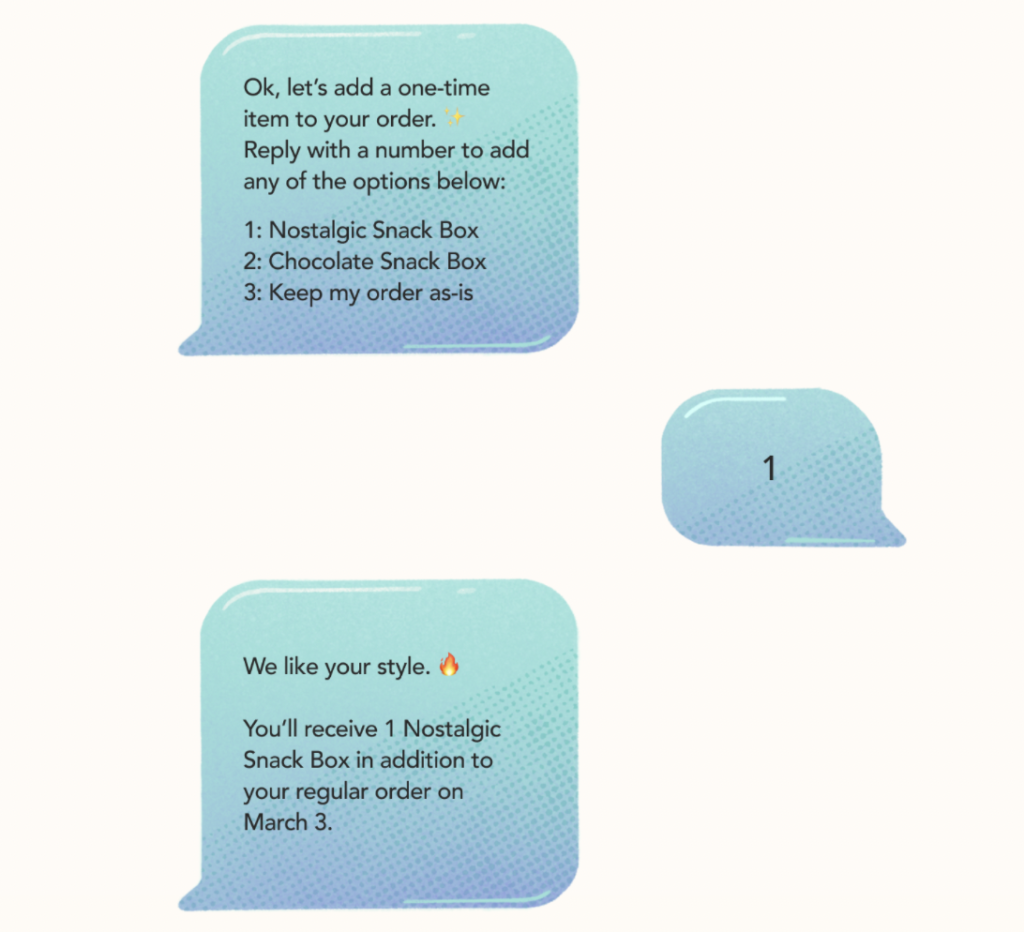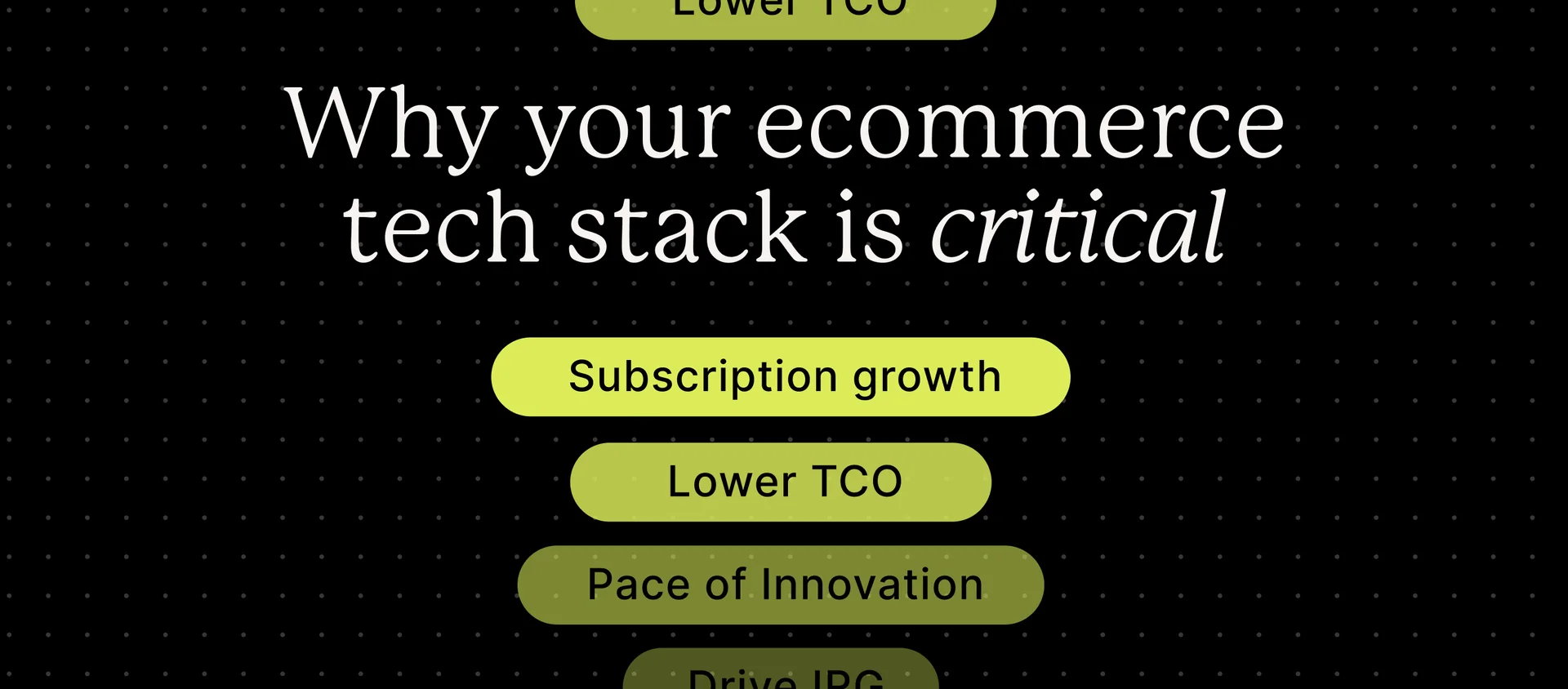These days, customer experience (CX) is a make-or-break factor for ecommerce brands. Customer expectations are higher than ever, and a poor customer experience can have a monumental impact on a brand’s performance.
According to PWC’s customer experience report, in the US, 59% of customers will walk away after several bad experiences, and 17% will walk away after only one bad experience. That makes it more important than ever for brands to think critically about their customer experience strategy at every stage of the customer journey.
So—how can your subscription brand create a positive customer experience that paves the way for increased brand loyalty, customer retention, and customer lifetime value (LTV)? In this post, we’ll break down how to make your customer experience intuitive, convenient, and personalized.
How to optimize your customer experience & increase customer satisfaction
No matter what strategies you use for customer experience management, the most important thing is that you think empathetically in all your efforts. Center customer needs, collecting customer feedback along the way, studying it over time, and putting it to use in tangible ways.
Make your website intuitive
One of the most important ways in which you can create effective customer journeys is by optimizing your website. This should be done in a variety of ways, such as:
- Make sure that the pages of your site are organized logically, with an easy-to-understand flow and order.
- Create clear, prominent, and action-driven calls-to-action (CTAs).
- Showcase product imagery that is not only engaging but also clearly shows what your products look like and how they are used.
- Showcase your value proposition throughout your site. Imbue your brand voice and tone with elements of your core values, and weave this into your copy and site design—not just on your About page.
It can also be useful to create a subscription landing page to provide extra context about your recurring offerings, how they work, and the unique value that they offer. By properly setting customer expectations in this way, you can avoid confusion around your subscriptions down the road.

Offer convenient subscription management
To deliver a superior customer experience, it’s important to empower your subscribers to manage their own subscriptions with ease. Rather than locking them into a subscription they can’t change, allow them to perform actions without having to engage your Customer Support team, such as:
- Skipping or rescheduling an order
- Swapping products
- Adding one-time purchases to a subscription order
- Updating a delivery address
- Changing billing information
Empower your customers to make these types of changes straight from their customer portal. For an additional competitive advantage, consider transactional SMS, which allows your subscribers to make updates to their orders straight from their mobile device—no logging on required.
Of course, some issues cannot be resolved by the customer alone. For these situations, make it easy to engage your customer service team. A survey from Hubspot found that 68% of consumers are willing to pay more for products or services from a company with a strong record of customer service.
But don’t stop there—you can also capture customer feedback from your customer service teams to deepen your understanding of any pain points and how to resolve them.

By making your offerings as convenient and flexible as possible—and communicating this flexibility with your subscribers—you can increase the likelihood that customers will stick with your brand and recommend it to others.
Personalize your offerings
The value of subscriptions goes beyond a discount. One of the major ways that brands can enhance their customer experiences and add value for subscribers is through personalized product recommendations, or cross-sells (add-on products) and upsells (product upgrades).
Of course, tailoring your recommendations to your unique customer base offers numerous benefits for your business, including increased LTV and average order value (AOV). But the value of cross-selling and upselling goes beyond this: You can help your customers get the exact products or services for their unique needs. This also functions as a message to your subscribers that you notice what they care about and understand their priorities.
Customer data and feedback plays a major role in the effectiveness of your cross-selling and upselling efforts. You can use a customer’s purchase history or items in their shopping cart to inform your recommendations, or you can segment your customer base and send targeted recommendations for customers who share common traits.
To increase customer loyalty, put your subscribers in the driver’s seat
Regardless of the strategies you choose to optimize your customers’ experience, it’s imperative that you understand their points of view. Solicit their feedback on a regular basis and study their behavior to determine what matters most to them and how your brand can help them achieve this. In doing so, you allow your subscriptions to fit seamlessly into your subscribers’ lives, paving the way for memorable customer interactions and lasting brand relationships.



